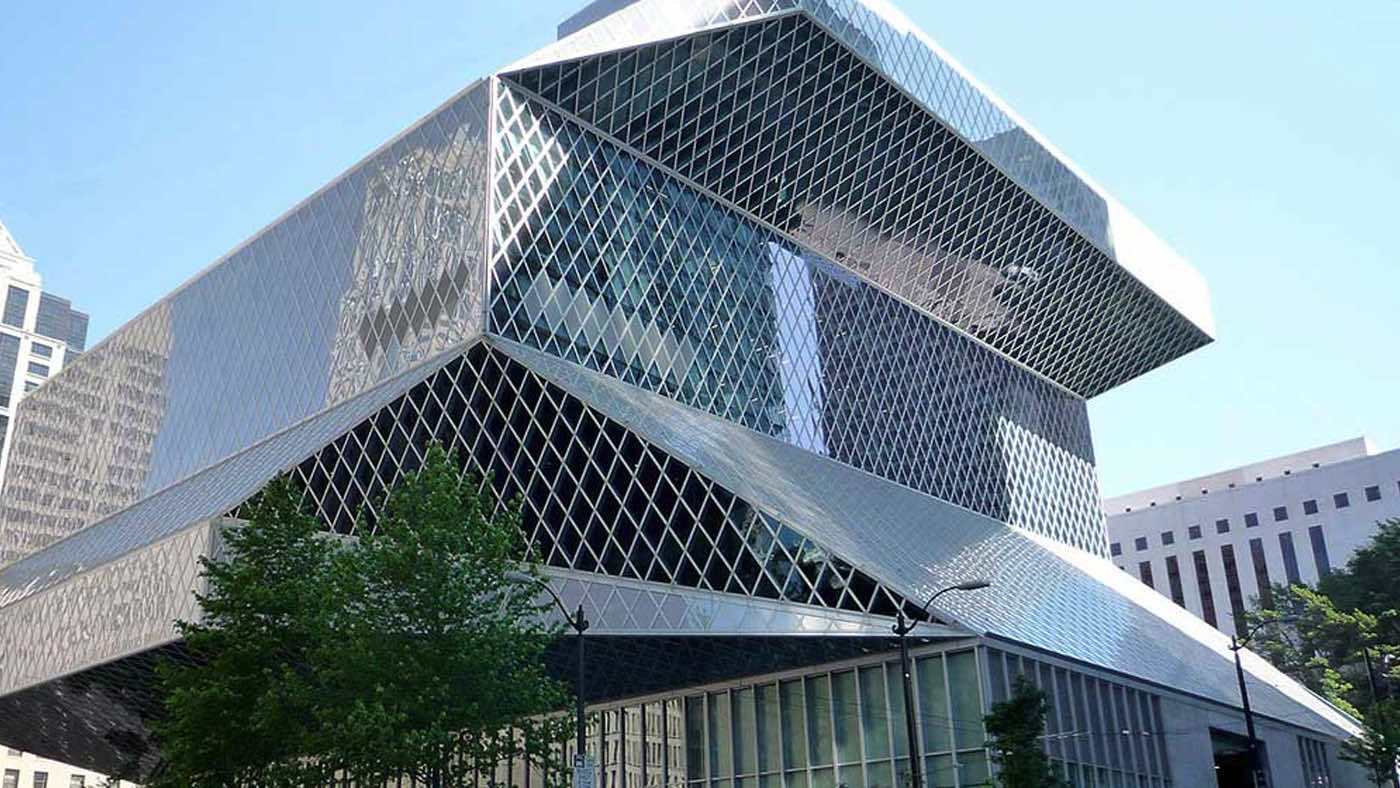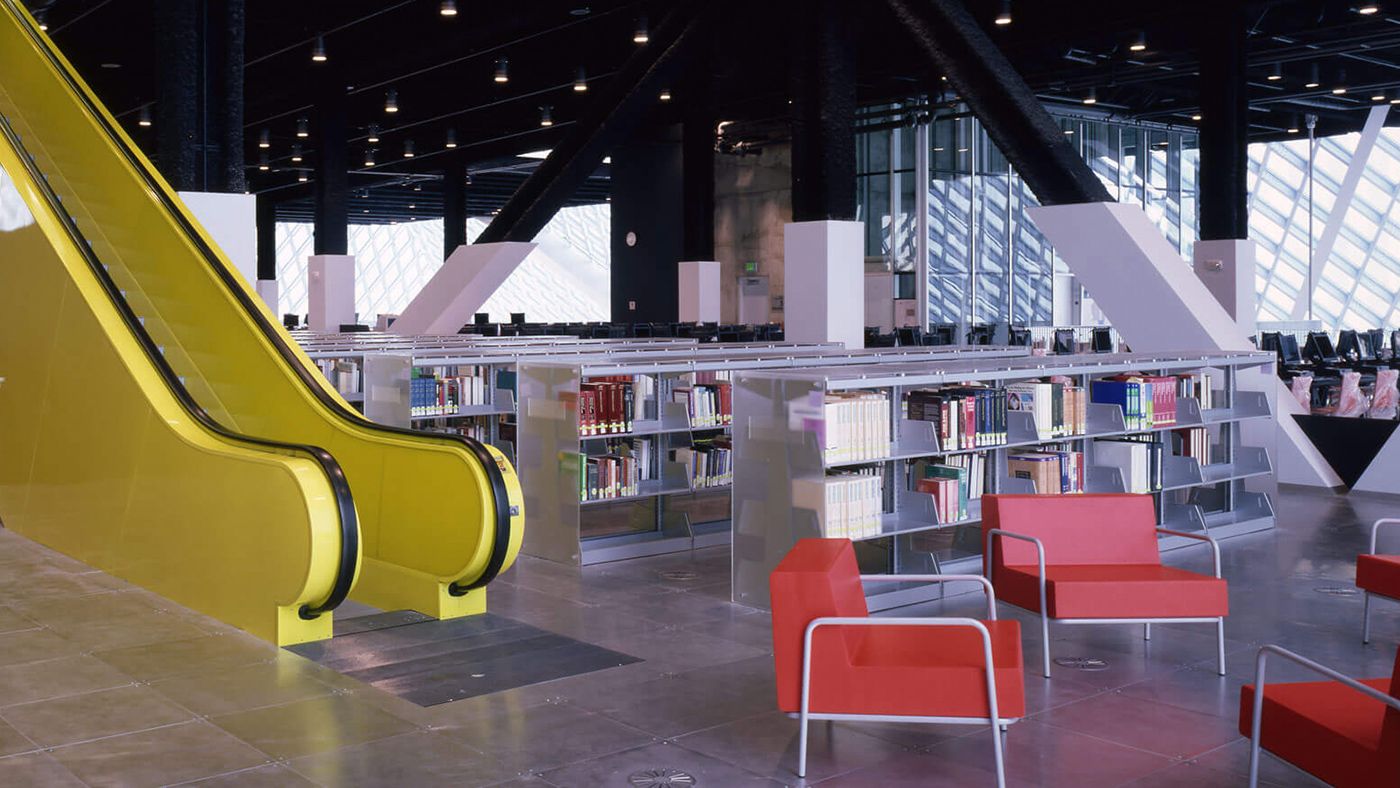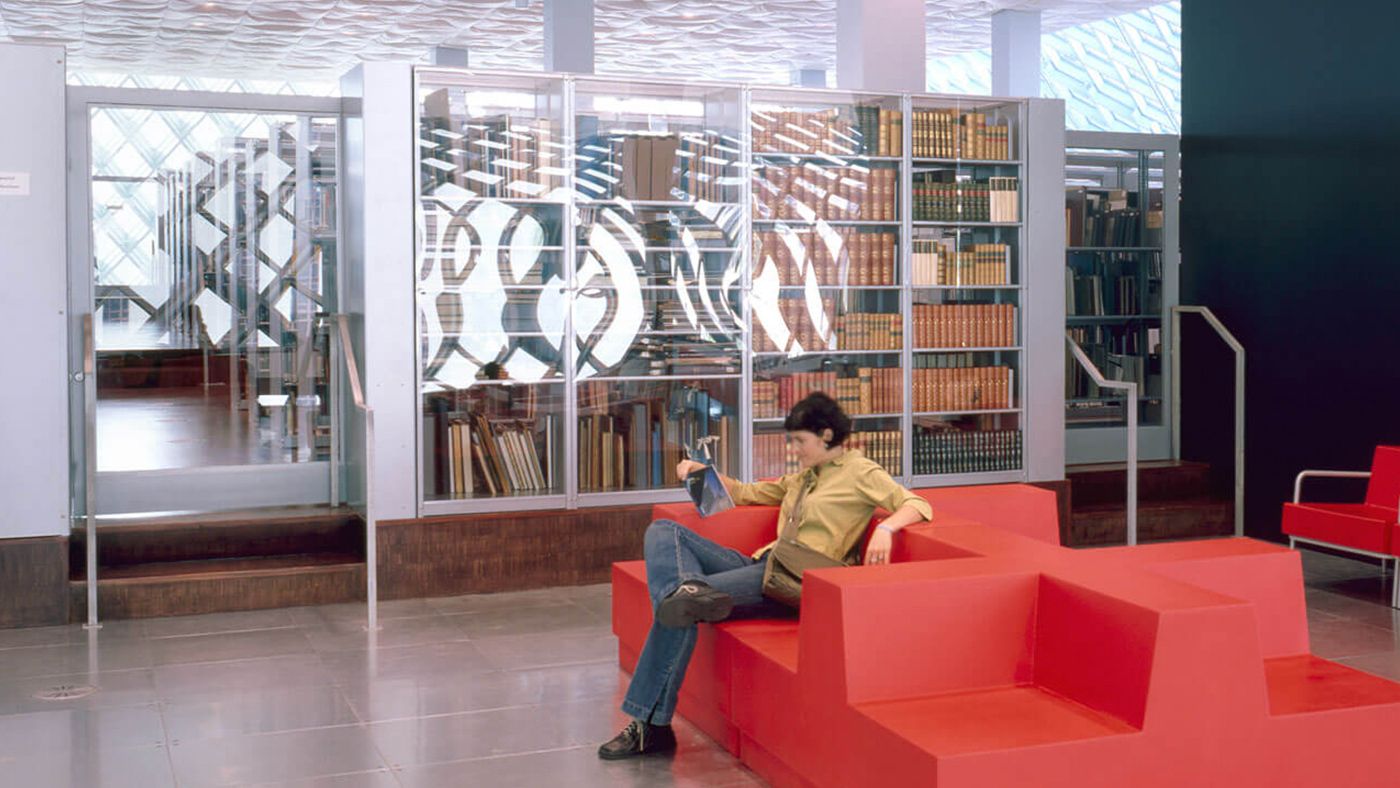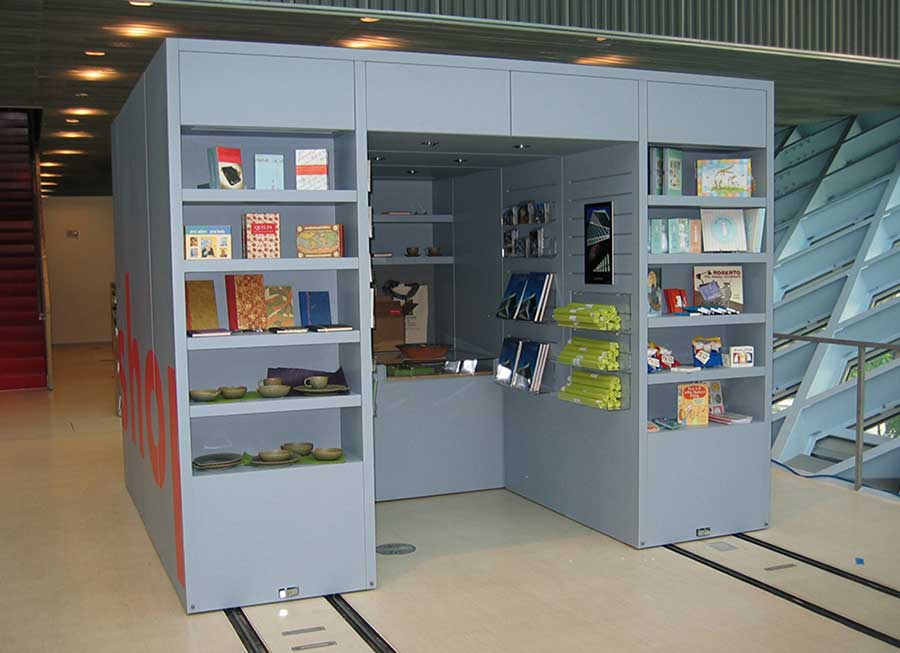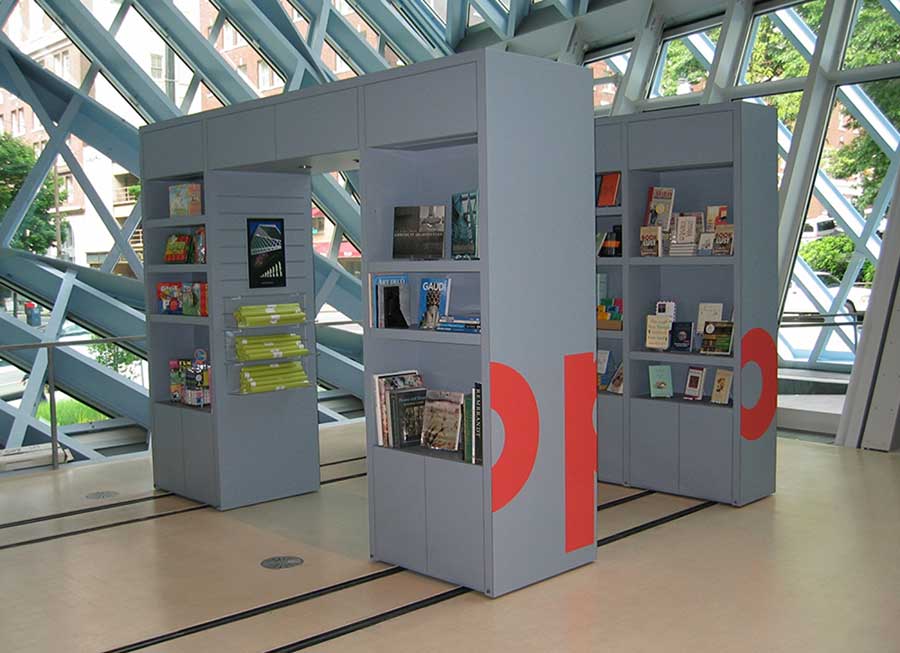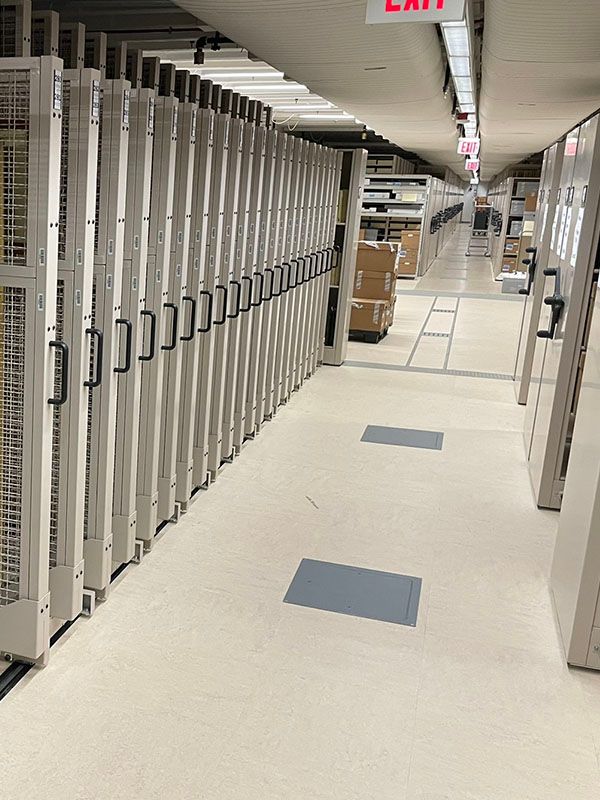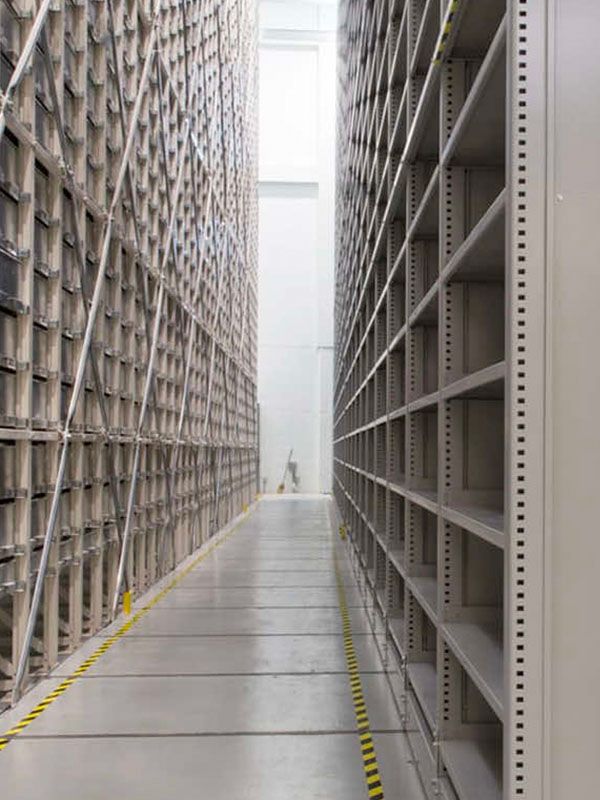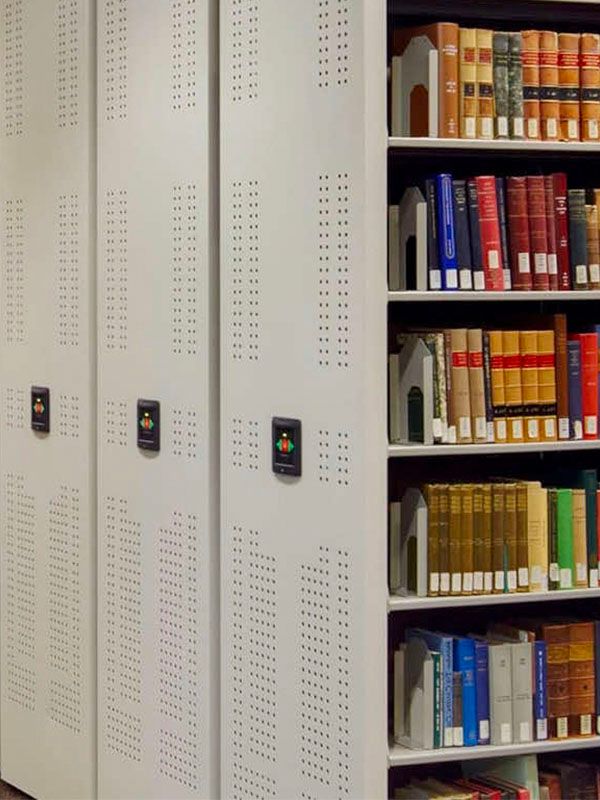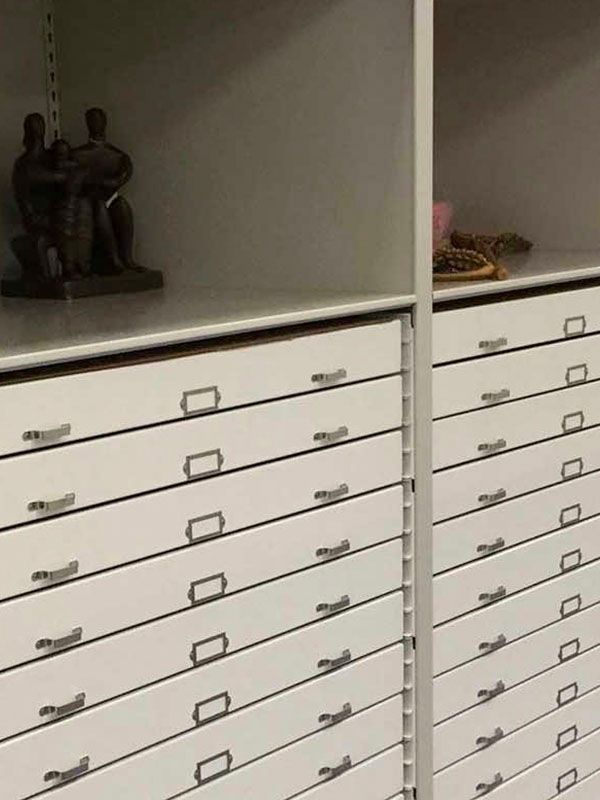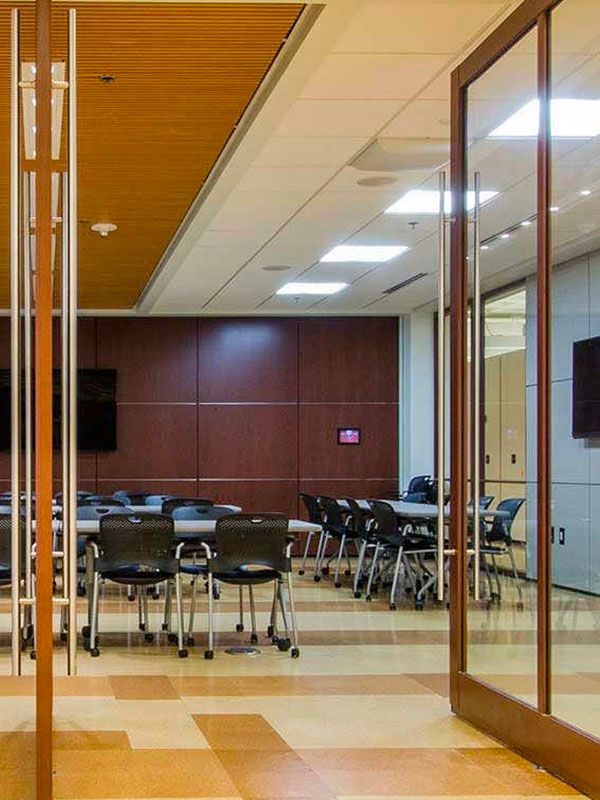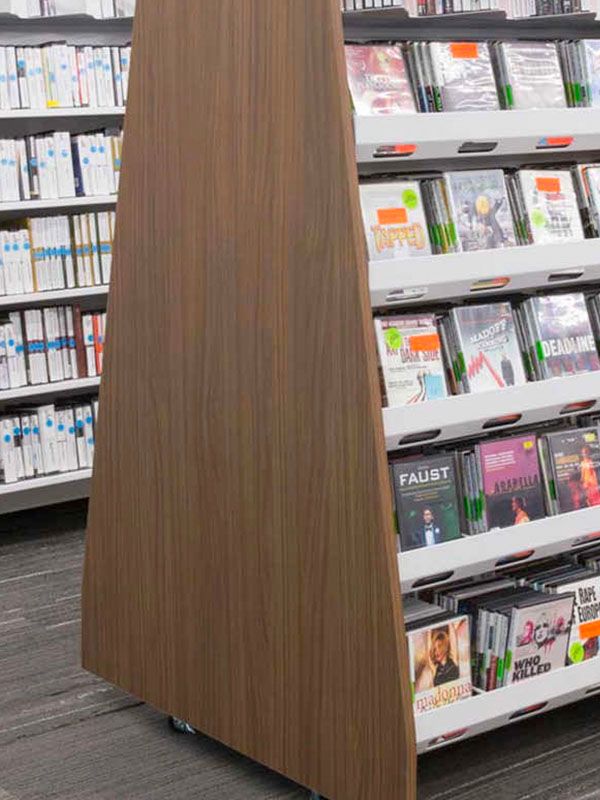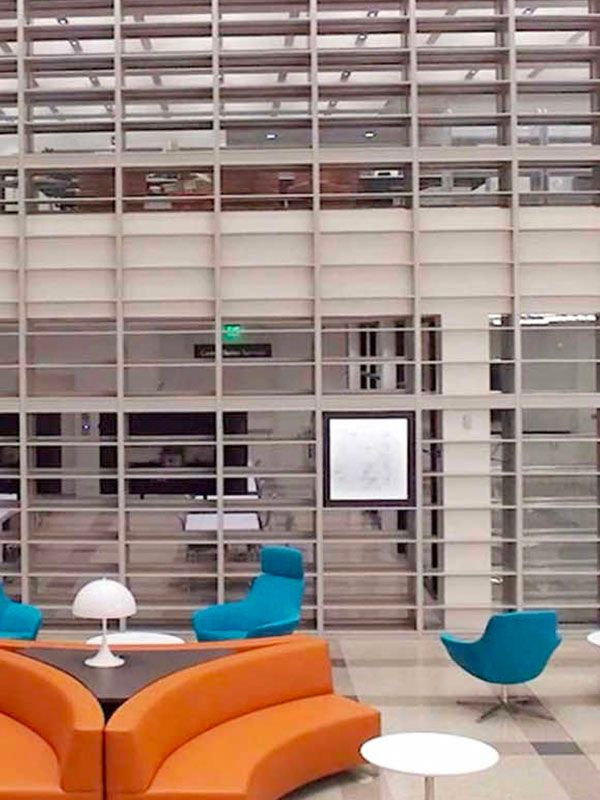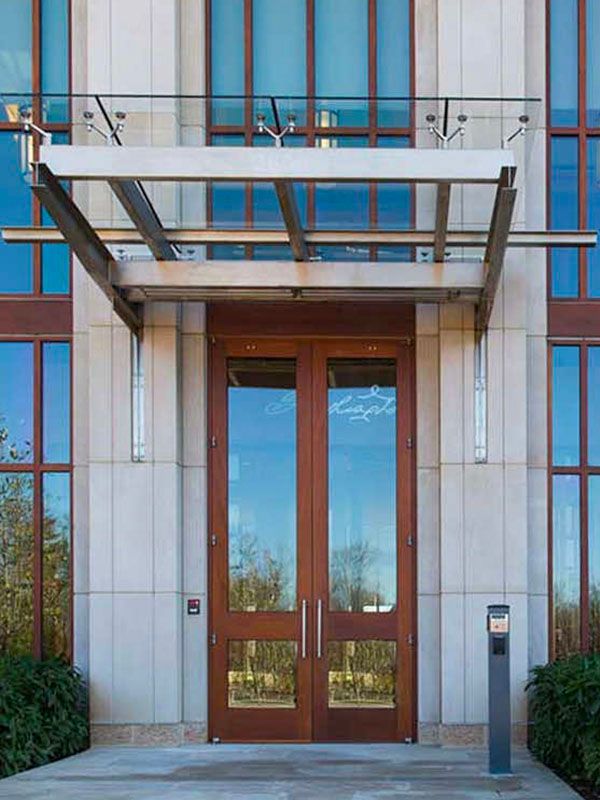Seattle, Washington
Library Revolution
The Seattle Central Library not only changed the way patrons use their public library, but it was also used as an instrument of creating environmental awareness. Many strategies were implemented during the design process to achieve this certification, from using recycled materials, to constructing the library near access to public transportation, to ensuring that 90 percent of all regularly occupied spaces have access to daylight and views.
From Passive Service Providers to Active Forces in Community
The 362,987-square-foot, state-of-the-art 11-story facility houses 1.4 million volumes of books and is consistently referred to as an inspiring, innovative and futuristic space that redefined the function of a modern public.
The building was truly designed for the library patron of the 21st century, providing access to not only books, but to over 400 computers, several community gathering places, special children’s areas, meeting rooms and a cafe. Over the last ten years, the library has served as an example for other public libraries across the country – demonstrating how they too can make the transition from passive service providers to active and vital forces in their community.
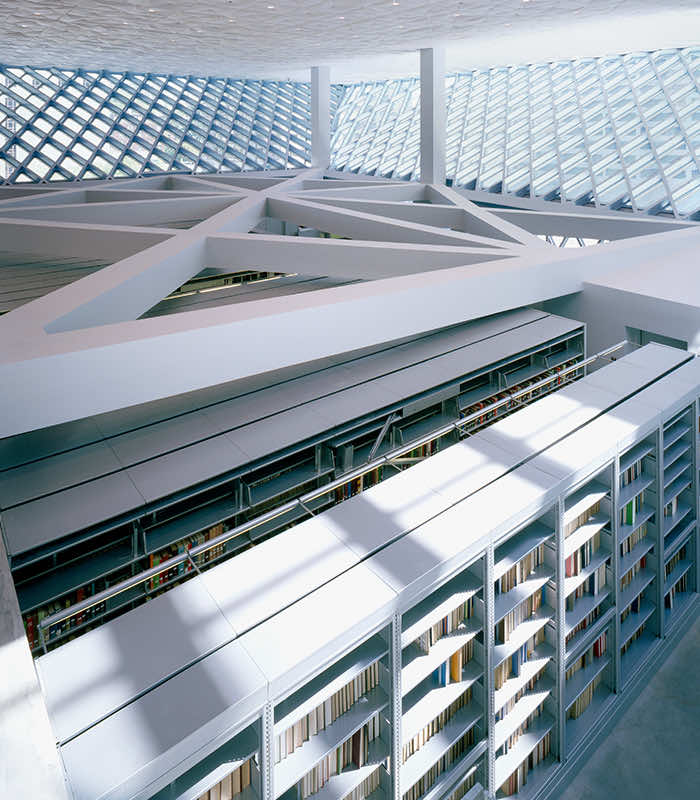
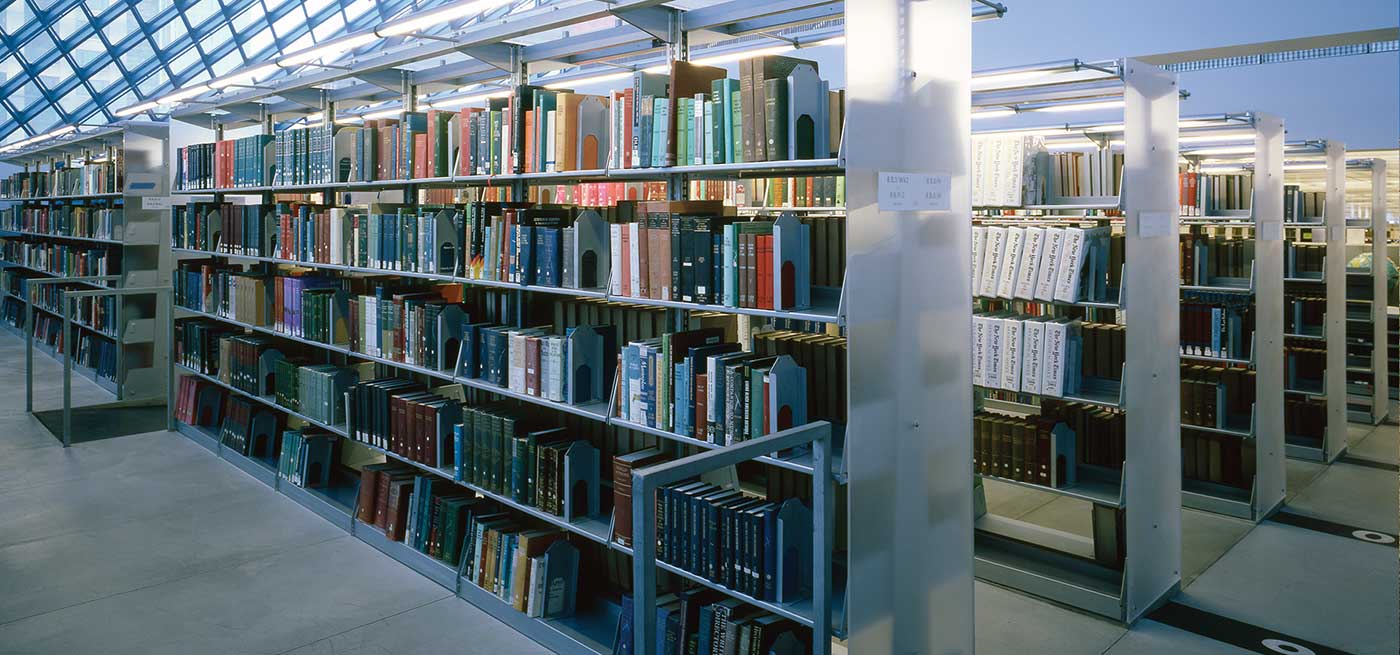
"As in any library, the central focus is the books and the shelving that they sit on. We wanted to create a unique experience for the visitor with the foremost feature of the building being the public spiral book stack, which is one continuous ramp."
- Pragnesh Parikh, , Managing Architect , LMN Architect
Lighting the Way for Sustainable Design in Seattle
The Seattle Central Library not only changed the way patrons use their public library, but it was also used as an instrument of creating environmental awareness. The building received Leadership in Energy and Environmental Design (LEED) Silver Certification from the U.S. Green Building Council (USGBC) in 2005, becoming one of the 50 first buildings in the nation to receive a Silver rating.
Many strategies were implemented during the design process to achieve this certification, from using recycled materials, to constructing the library near access to public transportation, to ensuring that 90 percent of all regularly occupied spaces have access to daylight and views.
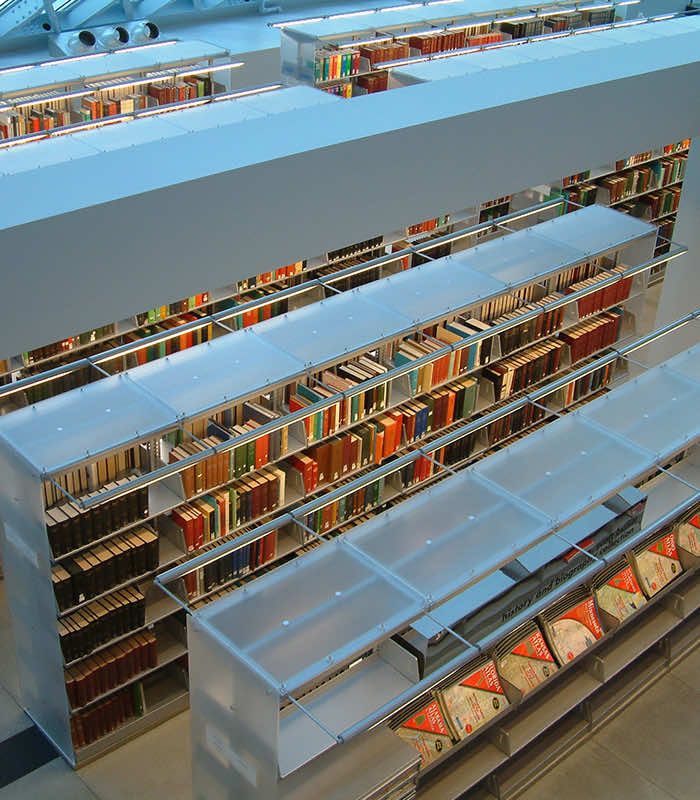
"Developing the acrylic panels was a challenge. Spacesaver stood behind us with engineering support to achieve our goals."
- Pragnesh Parikh, Managing Architect, LMN Architect
The use of light was actually a critical factor in every aspect of the library’s design, not just a sustainable element. From the exterior maze of windows that wraps the entire building, to the interior 11-floor atrium and polycarbonate ceiling that help to distribute light, to the glass walls that divide the sides of the spiral stacks, every detail was considered in maximizing the natural light.
In keeping with this principal design concept, the design team didn’t want the book stacks to create a visual barrier, so they chose a translucent acrylic material for the top and end panels of the shelving. Engineers at Spacesaver tested different acrylic materials for scratch resistance, durability and strength. The engineering team also sourced unique, stainless steel pins that were used to off-set the panels from the shelving frames and designed special lighting brackets for a custom overhead lighting solution. All shelving units were also seismically reinforced with gussets and additional welded spreaders to assure code compliance and safety. Learn more about Spacesaver sustainable practices and how we can work with you to achieve your goals.
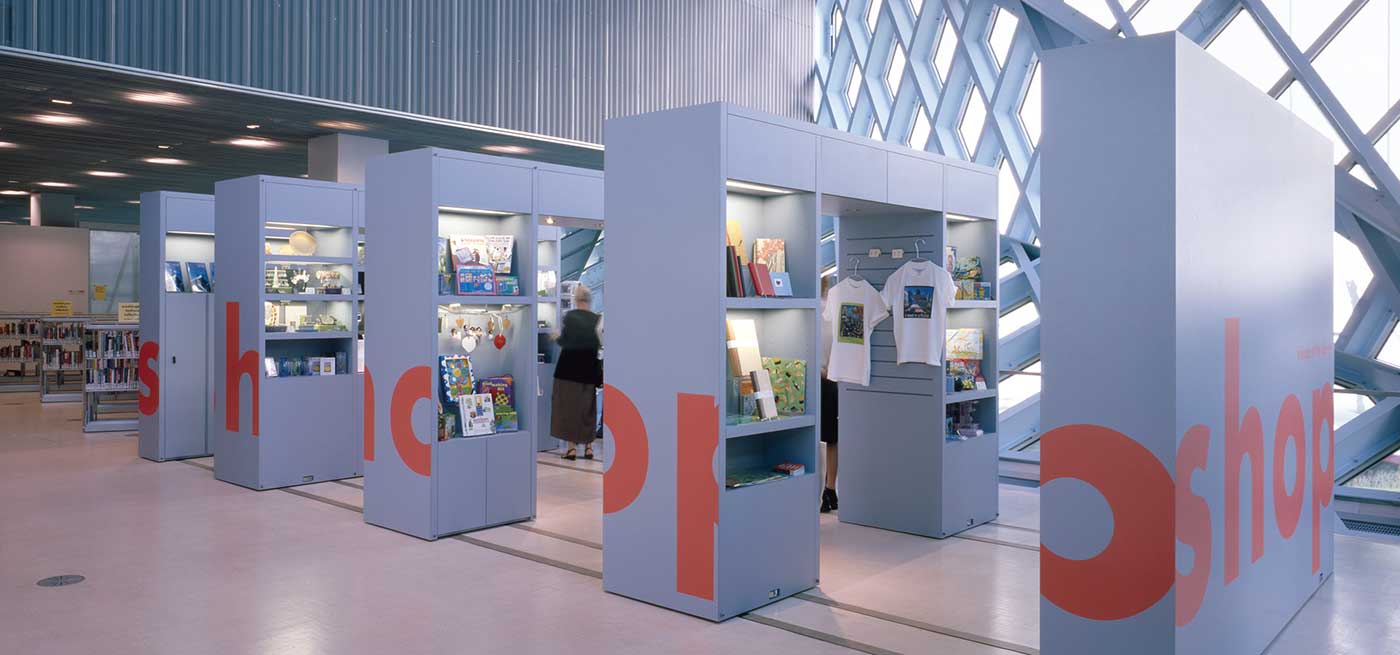
"Light is very important in Seattle. We wanted to create as much ambient light as possible, as well as one unending visual space stretched across 11 stories."
- Pragnesh Parikh, Managing Architect, LMN Architect
A New Way of Delivering Books
The majority of the library’s nonfiction collection is housed in this four-level book spiral. The aisles have a gradual upward slope of about 2 degrees, creating a continuous ramp designed to display the library’s nonfiction collection without breaking up the Dewey Decimal System classification onto different floors or sections.
The collection spirals up through the four stories on a continuous series of shelves, outfitted with the acrylic end panels that allow light to flow freely through the space.
In addition to the conventional bookshelves with acrylic end panels that are found throughout most of the library and in the spiral stack area, several high-density mobile shelving systems were installed in non-public areas for infrequently accessed material, like books, periodicals, and even personnel records in locked drawers.
Four of the mobile systems are electrically powered and open and close with a simple push of a button. These units sit on the 6th, 7th, 8th and 9th floors, all situated directly over top of each other. They vary slightly in size but in general are about 30’ in length with between 20 and 32 mobile carriages.
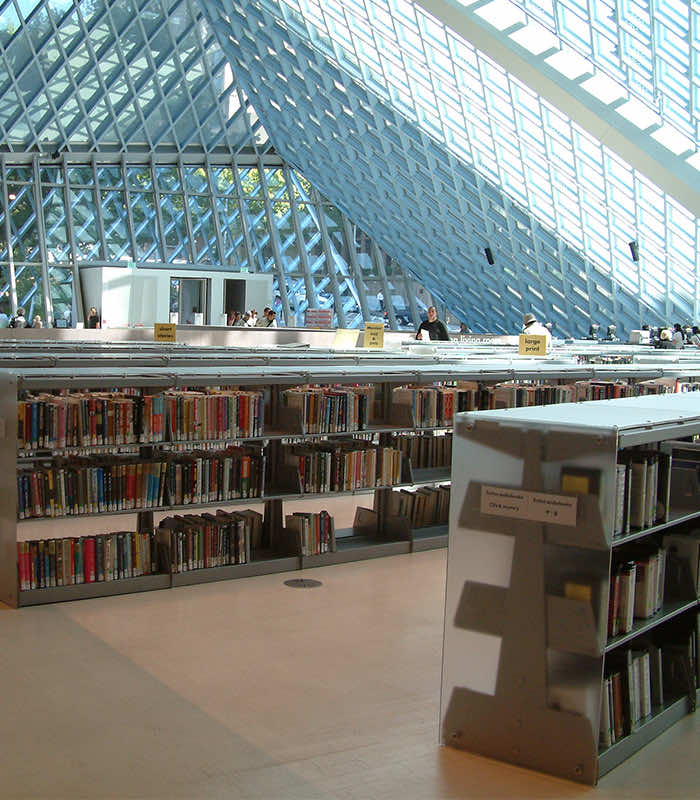
A fifth system is a Mechanical Assist Spacesaver system, operated by a hand crank, and is located behind the children’s area on the main floor. It has 12 carriages and they are 12 feet in length.
These high-density mobile shelving systems provided double the capacity of traditional shelving systems, and helped the library bring everything back to one location. Prior to construction of the Central Library, a large portion of the collection was located in a building a few miles away from the library and was mostly unavailable to the public. If there was a book or document that a patron wanted to view they would have to put in a special request and the book would then be temporarily transferred to the library for viewing. This transfer could take several days.
A Gift Shop Unlike any Other
A sixth high-density mobile system is used in the main lobby of the library to house a gift shop. OMA’s Mark Von Hof-Zogrotzki designed the cabinetry that would be used and then worked with Spacesaver to install the cabinets onto mobile carriages that run on tracks in the floor. The carriages are carefully concealed beneath the cabinets, so all that is seen is the custom cabinets.
The shop can easily be opened each day by manually rolling the custom cabinets along the tracks in the floor. Once the aisles are opened, each cabinet can be plugged into a floor outlet in order to light merchandise and power the cash register. Special carriage rail covers were designed to provide a convenient, safe public space. At the end of the day, the entire shop can be locked into a tight cube.
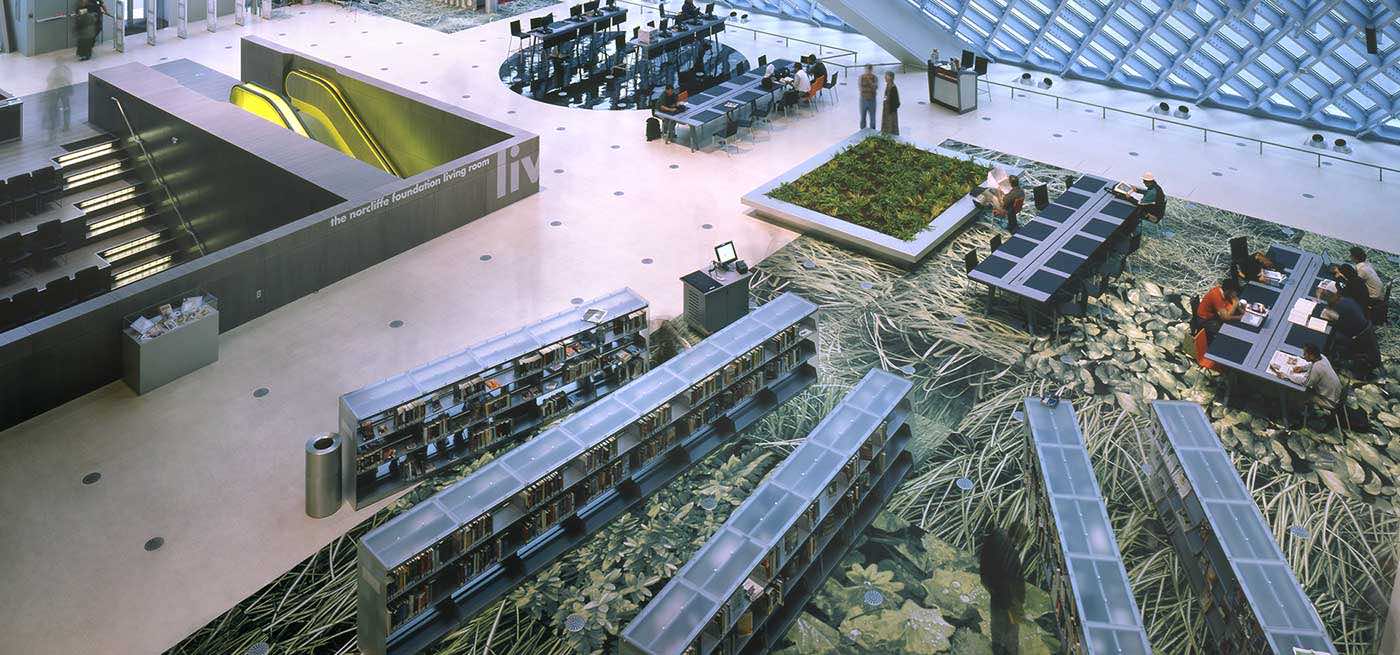
"The Spacesaver team were open to new ideas throughout the project. When working with designers, it is important to be flexible. Standard solutions are easy to find, but a modified design approach is critical to achieving a unique outcome. If everything we did was readily available in the marketplace, we wouldn’t be designers."
- Pragnesh Parikh, Managing Architect, LMN Architect
Redefining Storage Solutions
An Authorized Spacesaver Representative helped develop the technical specifications for both the fixed and mobile shelving used throughout the library. He even took designers to a local job site to educate them on the benefits of mobile storage.
Custom elements were incorporated throughout the project, beyond just the acrylic end panels used on most of the static shelving. For example, specially designed drawers were added to the cantilever shelving to accommodate the library’s existing card catalog.
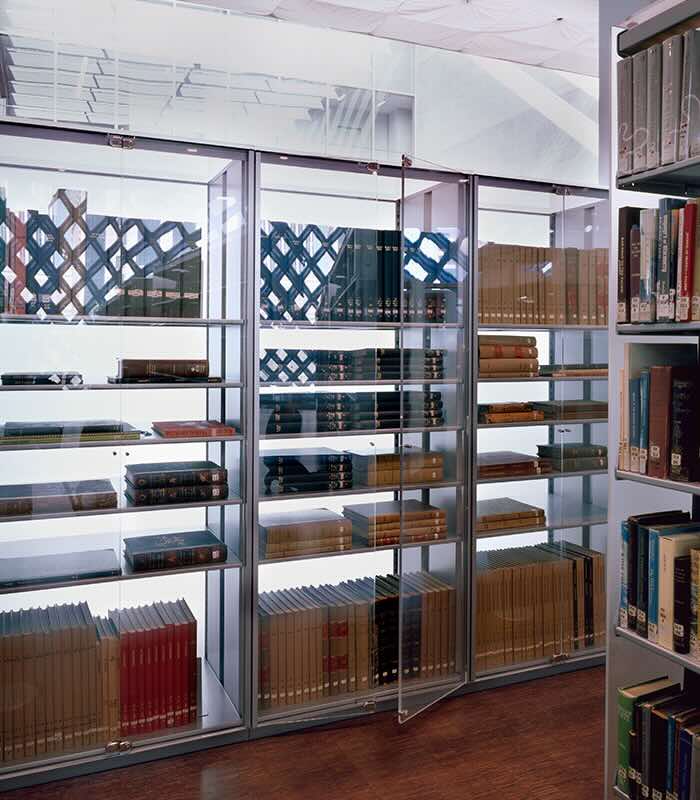
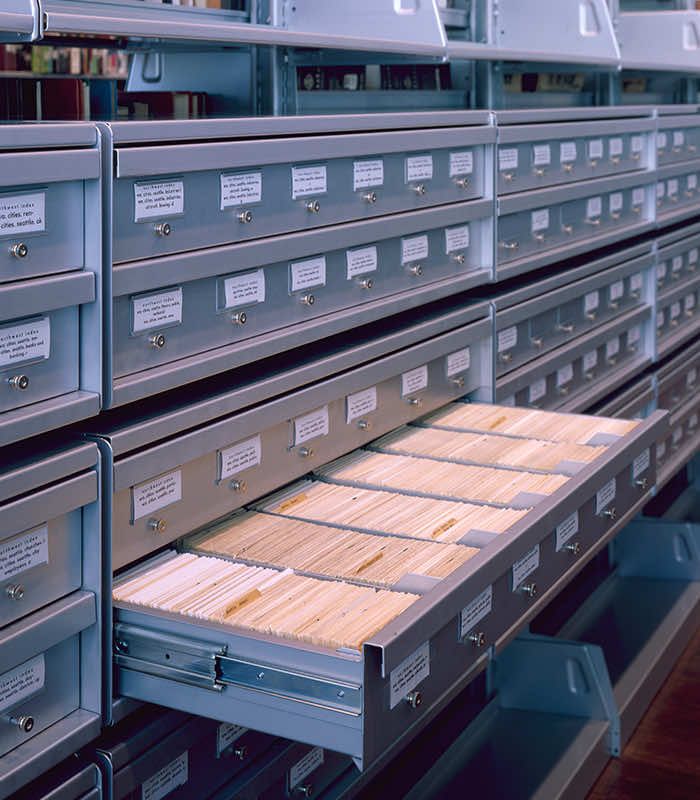
A secured area called “The Seattle Room”, located on the 10th floor houses most of the library’s rare books collection. It is open to the public, however, it has limited hours and library personnel is always present to manage user access. The Spacesaver shelving in this space was outfitted with clear acrylic doors that can close and lock to secure the rare books collection, but still, allow light to enter the space.
The Seattle Public Library broke the barrier of standards when it comes to the designing a space that is built specifically for the benefit of it’s users for an overall better experience within its walls.
